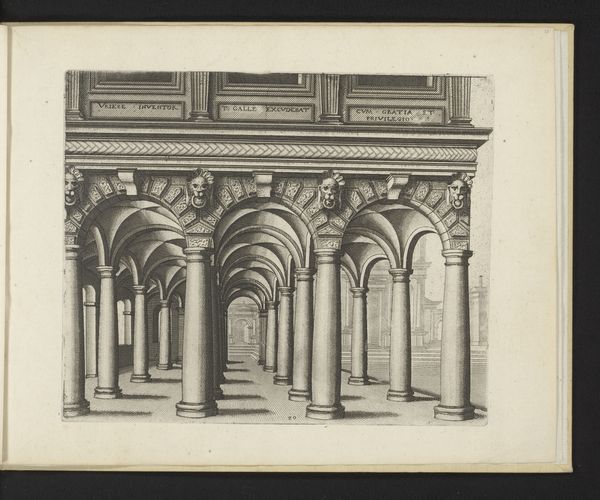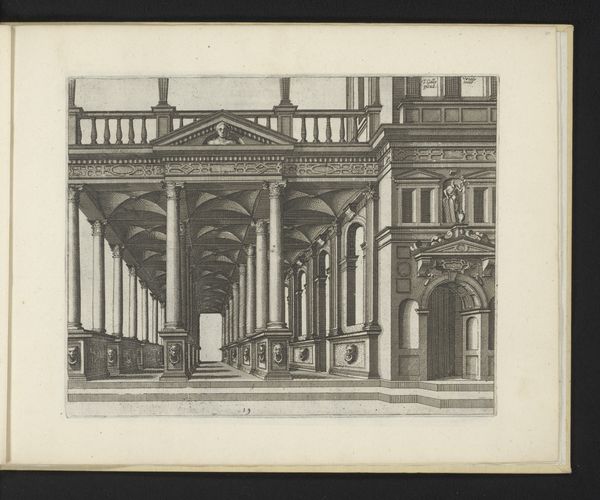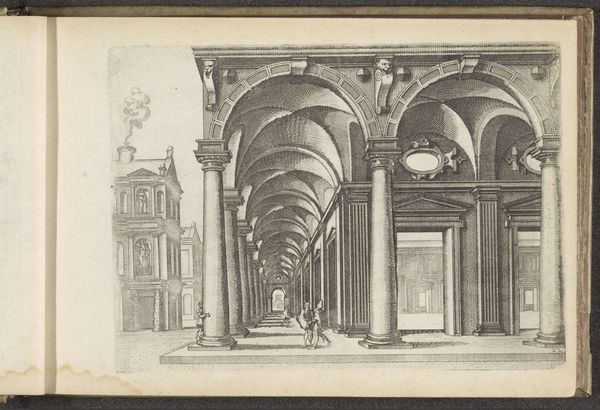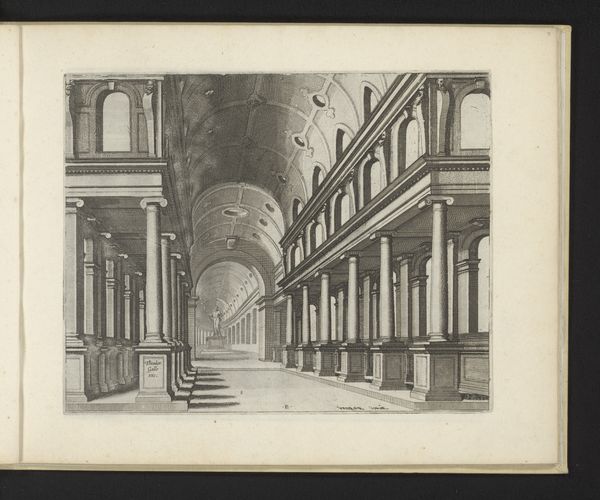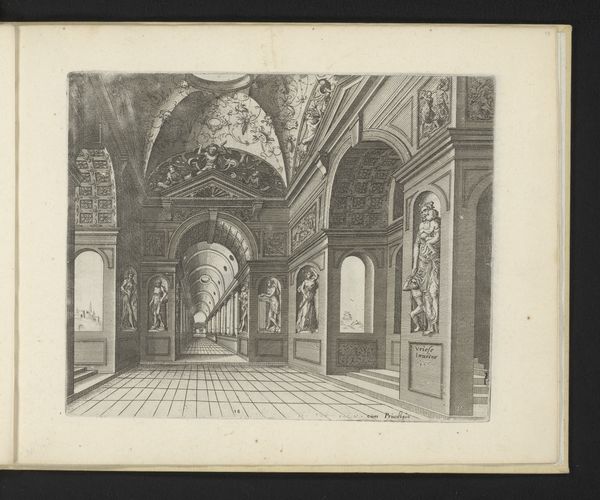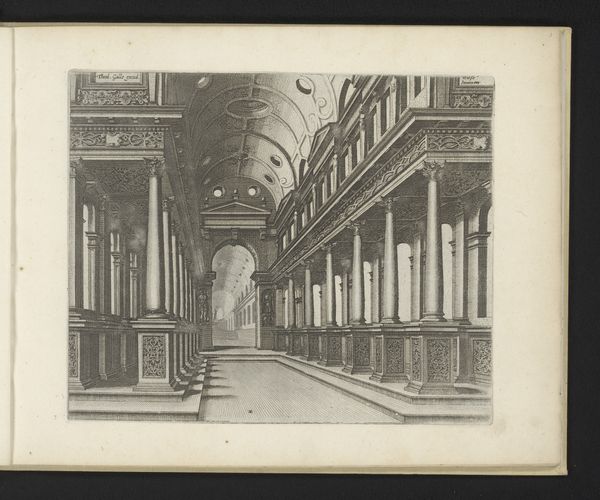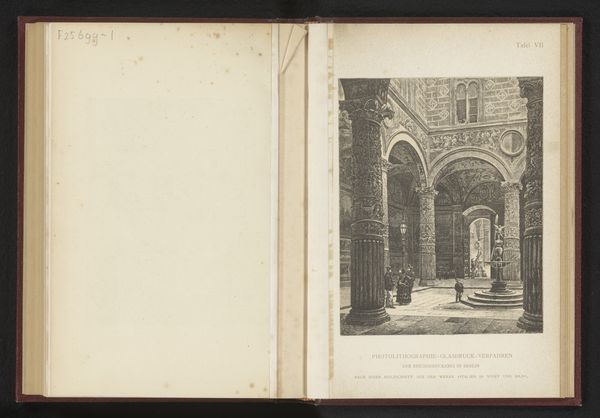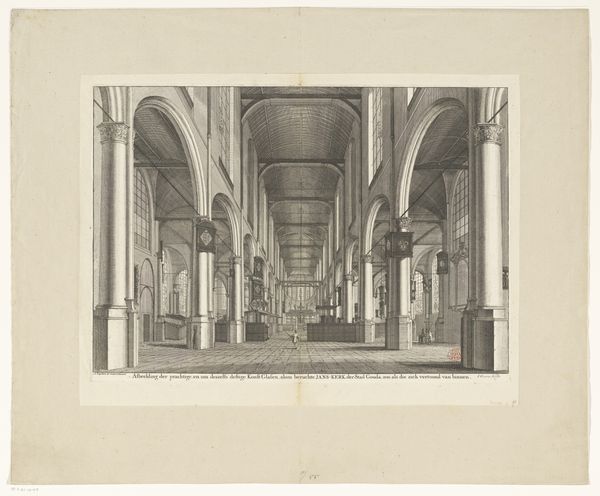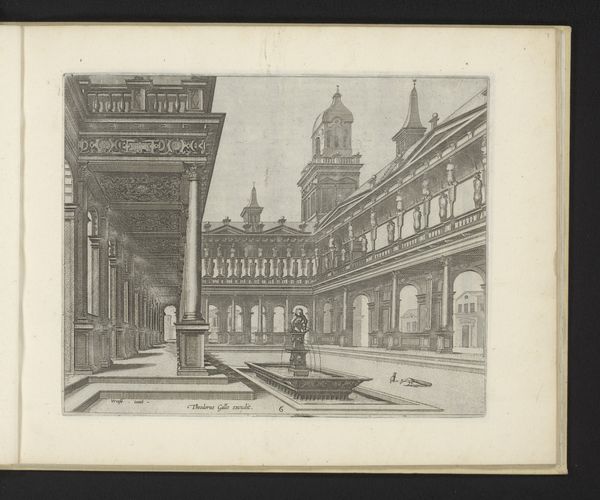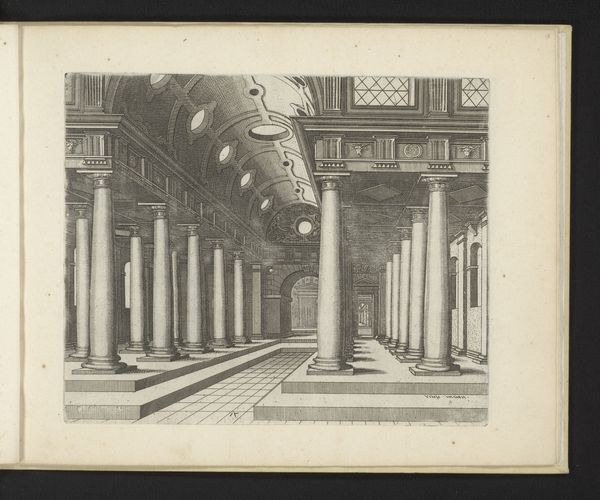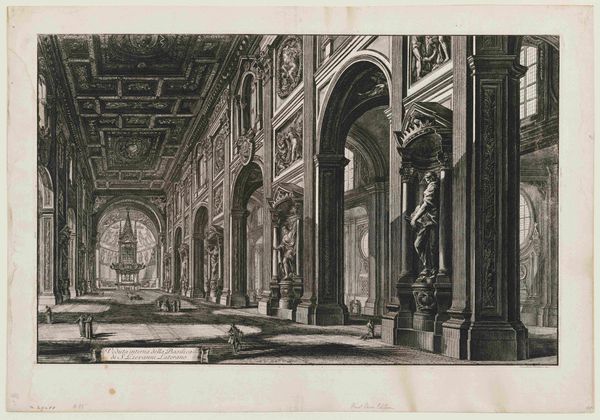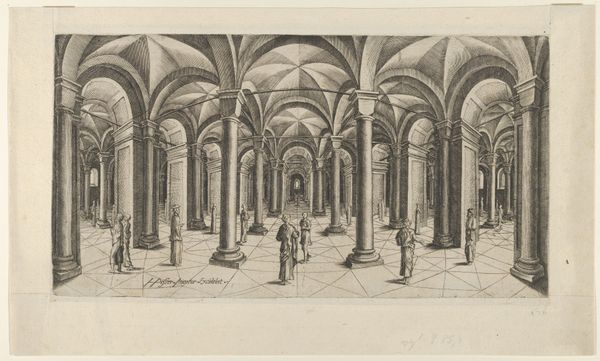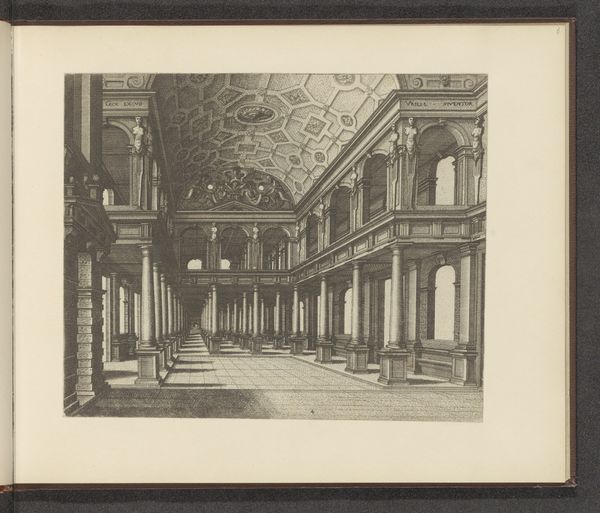
drawing, paper, engraving, architecture
#
drawing
#
aged paper
#
paper non-digital material
#
pen drawing
#
mechanical pen drawing
#
sketch book
#
perspective
#
paper
#
11_renaissance
#
personal sketchbook
#
pen-ink sketch
#
pen and pencil
#
pen work
#
cityscape
#
paper medium
#
engraving
#
architecture
Dimensions: height 211 mm, width 257 mm
Copyright: Rijks Museum: Open Domain
Curator: The Rijksmuseum holds this detailed drawing by Johannes or Lucas van Doetechum. It’s titled “Loggia gedragen door saterhermen,” dating back to 1601, crafted on paper with pen and engraving. Editor: My first impression is of a stage set—incredibly precise and strangely dreamlike. The architectural rendering feels both grand and intimate. I mean, the detail is just mesmerizing. Curator: The artists really capture a fascination with perspective, right? Notice how the loggia stretches back, those satyr herms holding up the structure dwindling into the distance. It’s an exploration of space and classical motifs filtered through a Renaissance lens. Editor: It’s the figures themselves that intrigue me. Satyrs, traditionally wild and untamed, reduced to structural supports. Is it a comment on order and control? Curator: Possibly. It reflects the era's fascination with taming the natural world through architectural order. These garden pavilions or “casino” structures, popular in the late 16th century, represented status and wealth; almost controlling a piece of paradise, one might argue. Editor: Paradise…or a gilded cage? The further I look, the more confined that loggia feels. The stark precision contrasts with the supposed freedom it should embody. Even the distant building lacks a human element, as if it awaits performers, you know, puppets almost, in the wings. Curator: That's a sharp reading. I do think it speaks to a specific societal performance. Consider how prints and drawings like this circulated; a kind of aspirational blueprint intended to inspire wealthy patrons. It was an early form of advertising of sorts. Editor: Like a luxury property brochure from the 17th century! Suddenly those stone satyrs feel even more burdened. What a strange collision of aspiration and art. It really prompts some thought. Curator: Exactly. A beautiful glimpse into a bygone world viewed through the lens of art and design.
Comments
No comments
Be the first to comment and join the conversation on the ultimate creative platform.
